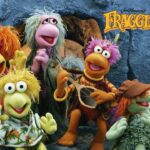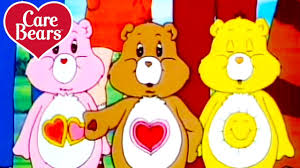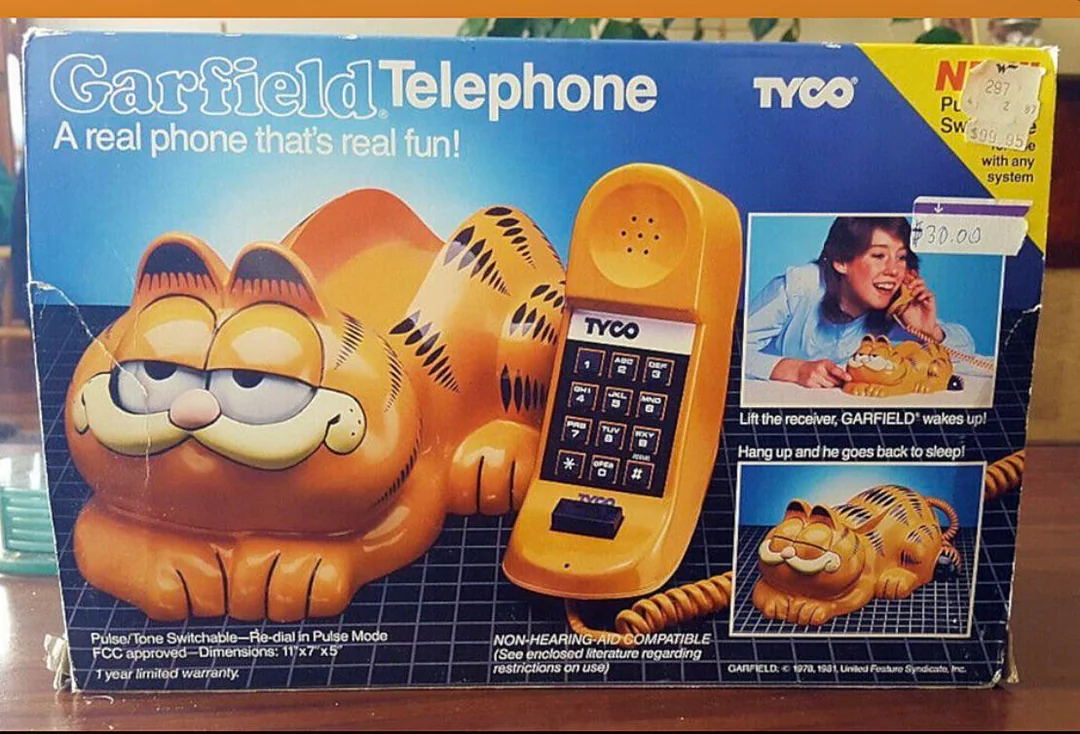 In the sprawling and often oversaturated landscape of children’s television, few shows have ever managed to achieve the perfect blend of whimsy, intelligence, music, and moral complexity quite like Fraggle Rock. Premiering in 1983 as a co-production between Jim Henson Productions, HBO, CBC, and various international broadcasters, Fraggle Rock was far more than a puppet show—it was an ambitious attempt to foster global understanding, self-awareness, and empathy through a vibrant subterranean fantasy world.
In the sprawling and often oversaturated landscape of children’s television, few shows have ever managed to achieve the perfect blend of whimsy, intelligence, music, and moral complexity quite like Fraggle Rock. Premiering in 1983 as a co-production between Jim Henson Productions, HBO, CBC, and various international broadcasters, Fraggle Rock was far more than a puppet show—it was an ambitious attempt to foster global understanding, self-awareness, and empathy through a vibrant subterranean fantasy world.
What made Fraggle Rock unique wasn’t just its charming characters or the catchy theme song, although both were legendary in their own right. It was the thoughtful architecture of its universe, populated by Fraggles, Doozers, and Gorgs, each group representing a distinct facet of society. Beneath the colorful surface of fun and frolic was a layer of rich allegory that tackled environmentalism, class structure, religion, prejudice, death, and the meaning of life—all without ever talking down to its young audience.
The Fraggles—Gobo, Mokey, Red, Wembley, and Boober—were the show’s main characters. With each embodying a unique personality type, they formed a kind of archetypal ensemble. Gobo was the brave explorer and de facto leader. Mokey, with her dreamy poetics and spiritual inclinations, functioned as the introspective soul. Red was athletic, competitive, and passionate, a fiery counterpoint to Mokey’s calm. Wembley, ever indecisive and eager to please, represented anxiety and empathy. Boober, the hypochondriac and lover of laundry, was the existentialist, perpetually obsessed with doom and gloom.
The Fraggles lived in Fraggle Rock, a vibrant series of caves connected to outer worlds through hidden passageways. One led to the workshop of an elderly inventor named Doc and his dog, Sprocket. Another opened into the realm of the Gorgs—gigantic, clumsy, and self-proclaimed rulers of the universe who in truth were rather pitiful and oblivious. Then there were the Doozers, tiny, industrious green creatures who spent their lives building intricate structures out of a material the Fraggles loved to eat.
From this deceptively simple premise, the show constructed a multilayered ecosystem in which metaphor and message were deeply embedded. It wasn’t merely about teaching kids to be nice to each other; Fraggle Rock sought to illustrate that communities—no matter how different—were interconnected. What happened in one part of the Rock inevitably affected the others, often in unseen or unintended ways. It was a precursor to ecological thinking in children’s media.
Perhaps the most revolutionary aspect of the show was its sincere engagement with conflict resolution. Whereas other children’s shows of the era might present a moral in neatly wrapped packages, Fraggle Rock was willing to leave its audience sitting with discomfort. It didn’t shy away from depicting misunderstanding, tension, or the need for compromise. Fraggles were not perfect—they were egotistical, fearful, judgmental, or reckless. But through exploration, music, and often difficult introspection, they learned to navigate the consequences of their actions.
The episode “The Trash Heap Doesn’t Live Here Anymore” showcases this well. Marjory the Trash Heap, a sentient pile of garbage with the wisdom of a Zen master and the flair of a vaudevillian fortune teller, serves as the Fraggles’ spiritual guide. When she disappears, the Fraggles are thrown into panic. But rather than quickly resolving the plot, the episode lingers on themes of loss, community support, and the realization that wisdom doesn’t reside in a person—or heap—but in collective understanding. That sort of narrative bravery was rare for its time.
Another standout episode, “Wembley and the Gorgs,” explored cross-species empathy. Wembley, after being captured by the Gorgs, begins to understand their loneliness and humanity, as well as his own biases. The Gorgs themselves are tragic figures—Ma and Pa believe they are royalty, while their son Junior is a confused and often angry character who doesn’t quite know how to process the world. Though they’re framed as antagonists, they’re never truly villains. The show’s refusal to paint enemies in black and white terms was a subtle lesson in moral ambiguity.
The Doozers, meanwhile, embody a commentary on capitalism and industriousness. They work tirelessly to build their structures—only to have them devoured by the Fraggles. And yet they are not bitter. In fact, they view the consumption as necessary, because it clears space for more building. On one level, it’s a metaphor for cyclical creativity and destruction. On another, it raises questions about the nature of purpose, labor, and satisfaction. Kids may not have realized it then, but they were getting their first taste of economic theory.
Music was the bloodstream of Fraggle Rock. Each episode featured original songs in a range of styles, from folk to rock to blues to gospel. These weren’t throwaway jingles; they were story-driven, emotionally resonant compositions that often advanced the plot or deepened character understanding. Songs like “Follow Me,” “Let Me Be Your Song,” or “Lose Your Heart (And It’s Found)” lingered long after the credits rolled. The show’s commitment to musicality was not surprising, given Henson’s appreciation for how rhythm and harmony could connect across cultures.
Cultural connectivity was no afterthought. Jim Henson envisioned Fraggle Rock as a global show, one that could be adapted by different countries. To that end, the outer world scenes with Doc and Sprocket were localized for each broadcasting nation. In the U.S., Doc was an eccentric inventor in a workshop; in the U.K., he was a lighthouse keeper. In France, he was a baker. This localization was unprecedented for a children’s program and spoke to Henson’s belief that entertainment could be a bridge rather than a boundary.
The production values were equally ambitious. The puppetry was sophisticated, with extensive underground sets that gave Fraggle Rock a sense of expansive realism. The Fraggles moved fluidly, their mouths and limbs synchronized with expressive dialogue and movement. The Gorgs were towering puppet suits operated by full-body performers. The Doozers, filmed using a combination of marionettes and stop-motion, added to the illusion of scale and diversity. Despite being filmed in the pre-CGI era, the world of Fraggle Rock never felt cheap or compromised.
Running for five seasons with 96 episodes, Fraggle Rock concluded in 1987. Its finale, “Change of Address,” was a quiet, poignant end—not with fanfare, but with a subtle shift. Doc decides to move away, and Gobo finally overcomes his fear of outer space to say goodbye. It’s a touching meditation on growth, separation, and change, signaling to children that endings are a natural part of life. And more importantly, that bonds, once formed, endure even through transformation.
In the years since its original run, Fraggle Rock has maintained a cult following. Its themes feel even more urgent in today’s fractured world. The idea that interconnected communities must listen to each other, that wisdom is collective, that enemies are often misunderstood rather than malevolent—these are messages that transcend childhood. The show has been rebroadcast, adapted, and rebooted. In 2020, Apple TV+ released Fraggle Rock: Rock On!, followed by Back to the Rock in 2022. While the new versions have their own merits, many fans still regard the original series as irreplaceable for its mix of warmth and subversive intellect.
Jim Henson, who passed away in 1990, left behind a body of work that continues to resonate. But Fraggle Rock might be his most complete philosophical statement. More than The Muppet Show, more even than Sesame Street, Fraggle Rock was Henson’s attempt to build “a show that would save the world,” as he famously said. Of course, the world was not saved in any literal sense. But perhaps thousands of children grew into adults with just a little more compassion, a little more curiosity, and a little more courage—because they grew up dancing their cares away, down at Fraggle Rock.
The show’s genius was that it never preached. It invited. It never handed down edicts. It offered questions. It never underestimated its audience, which is perhaps the most radical thing a children’s show can do. In a television era increasingly driven by brand synergy and fast-paced consumerism, Fraggle Rock remains a reminder that slow, thoughtful storytelling still matters. That puppets can still change lives. That the best children’s television speaks to the child and the adult at the same time.
Looking back on Fraggle Rock today, one cannot help but feel a mix of nostalgia and yearning. Nostalgia for the world it created, and yearning for its spirit to be more present in our own. A spirit of joy, curiosity, understanding, and—above all—hope. In the world of the Fraggles, hope wasn’t some abstract idea. It was something you sang. Something you built. Something you shared. In that sense, Fraggle Rock may not have saved the world, but it certainly reminded us how we might begin to try.

